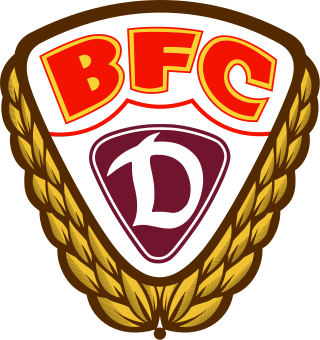
Berliner Fussball Club Dynamo e. V., commonly abbreviated to BFC Dynamo or BFC, alternatively sometimes called Dynamo Berlin, is a German football club based in the locality of Alt-Hohenschönhausen of the borough of Lichtenberg of Berlin. BFC Dynamo was founded in 1966 from the football department of SC Dynamo Berlin and became one of the most successful clubs in East German football. The club is the record champion of East Germany with ten consecutive league championships from 1979 through 1988. BFC Dynamo competes in the fourth tier Regionalliga Nordost. The club enjoys a cross-city rivalry with 1. FC Union Berlin and a historical rivalry with SG Dynamo Dresden. The rivalry with Union Berlin is part of the Berlin derby.
The 1960–61 season of the European Cup Winners' Cup club football tournament was won by Italian club Fiorentina in two-legged final victory against Rangers of Scotland.
The 1971–72 season of the European Cup Winners' Cup football club tournament was won by Rangers, who defeated Dynamo Moscow in the final.

Schwartzkopffstraße is a Berlin U-Bahn station located on the U6 line.

Sportforum Hohenschönhausen is a multi-purpose sports complex in the locality of Alt-Hohenschönhausen of the borough of Lichtenberg in Berlin. The Sportforum was named Dynamo-Sportforum during the East German era.
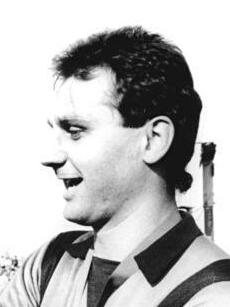
Bodo Rudwaleit is a German former football goalkeeper who played as goalkeeper for the record champion BFC Dynamo from 1976 to 1989.
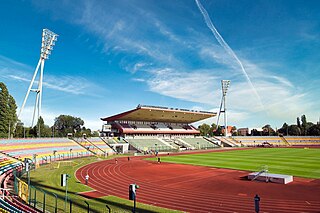
The Friedrich-Ludwig-Jahn-Sportpark is a multi-purpose sports complex located in the western part of the locality of Prenzlauer Berg in the borough of Pankow in Berlin. The sports complex covers an area of approximately 22 hectares and comprises several facilities. The main building is the Friedrich-Ludwig-Jahn-Stadion. The stadium is the third-largest stadium in Berlin, after the Olympiastadion and the Stadion An der Alten Försterei, with a capacity of approximately 20,000 seats, of which 15,000 are covered. Currently, the main tenants of the stadium are VSG Altglienicke and Berlin Thunder. Friedrich-Ludwig-Jahn-Sportpark was the venue for the 2018 World Para Athletics European Championships.

Football in Berlin, the capital of Germany, has a long history. The city contributed 24 of the 86 founders of the DFB, the German Football Association. The DFB Cup Final has been held every year at the Olympiastadion since 1985.

Norbert Trieloff is a German former football player.
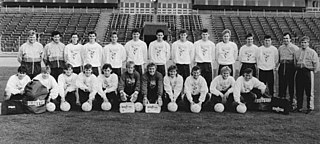
Jörn Lenz is a German former professional footballer who played as a defender. Lenz had four different spells with BFC Dynamo during his professional playing career and has continued to serve as part of the club's backroom staff since retiring in 2008. Lenz played a total of 374 matches for BFC Dynamo between 1988 and 2008. He made two appearances for BFC Dynamo in the 1989-90 European Cup Winners' Cup.

The Berliner Landespokal is an annual football cup competition held by the Berlin Football Association. The cup winner qualifies for the national DFB-Pokal. Cup finals are usually held in the Friedrich-Ludwig-Jahn-Sportpark. The competition has been held since 1906, with various interruptions. Record winners are Tennis Borussia Berlin with a total of 16 titles. It is one of the 21 regional cup competitions in Germany.
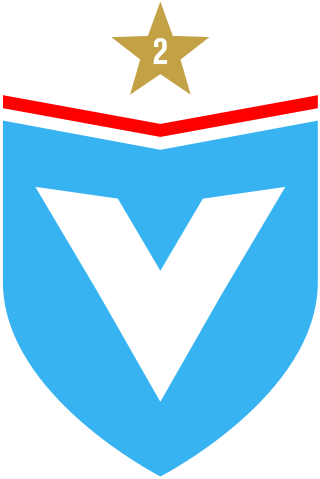
Fußball-Club Viktoria 1889 Berlin Lichterfelde-Tempelhof e.V., commonly known as FC Viktoria 1889 Berlin or Viktoria Berlin, is a German association football club based in the locality of Lichterfelde of the borough of Steglitz-Zehlendorf in Berlin. The club was formed on 1 July 2013 from a merger of BFC Viktoria 1889 and Lichterfelder FC. The club has the largest football department in Germany. The club also has 1,600 active members.

The Berlin derby is the name given to any association football match between two clubs in Berlin, Germany, but has more recently referred to the derby between 1. FC Union Berlin and Hertha BSC.
The history of BFC Dynamo began with the founding of the sports club Dynamo Berlin in 1954. SC Dynamo Berlin entered the 1954–55 DDR-Oberliga after taking over the first team of SG Dynamo Dresden and its place in the league. The relocation was designed to provide the East German capital with a competitive team that could rival the teams from West Berlin. Prominent players in the team were Günter Schröter, Johannes Matzen, and Herbert Schoen. Dynamo Berlin captured its first trophy in the 1959 FDGB-Pokal. The team then finished the 1960 DDR-Oberliga as runner-up. However, the team was relatively weak in the 1960s and was overshadowed in the capital by ASK Vorwärts Berlin.
The 1989–90 season was tumultuous for BFC Dynamo. The East German regime faltered and parts of the Berlin Wall were opened on 9 November 1989. Forward Andreas Thom became the first player in the DDR-Oberliga to leave for the West German Bundesliga. The dismantling of the champion team from the 1980s was now well underway. The Stasi was dissolved and the club thus lost a major sponsor. The East German Ministry of the Interior declared that it was only prepared to support the club until the end of the 1989–90 season. The club changed its name to FC Berlin on 19 February 1990, in an attempt to distance the club from the Stasi. The number of spectators dropped drastically. FC Berlin finished the 1989-90 DDR-Oberliga in fourth place and failed for the first time to qualify for a European competition. Also Thomas Doll, Frank Rohde and Rainer Ernst left for the Bundesliga after the season.
BFC Dynamo finished the 2003–04 Verbandsliga Berlin in first place and won promotion back to the NOFV-Oberliga Nord. Mario Weinkauf was elected as the new club president on 18 June 2004. His vision was a club that was "managed seriously from a sporting and financial perspective". Former professional player Christian Backs became the new coach for the 2004–05 season. Rajko Fijalek served as assistant coach and former professional goalkeeper Bodo Rudwaleit as goalkeeping coach. Central players in the team were Robert Rudwaleit, Nico Thomaschewski, Dennis Kutrieb, Jörn Lenz and Danny Kukulies. BFC Dynamo finished is first season in the NOFV-Oberliga Nord, since returning from the insolvency crisis, in sixth place.

Norbert Johannsen is a German former footballer.
BFC Dynamo developed a very successful youth academy during the 1970s. The team had an average age of only 22.7 years before the 1978–79 season. Young talented players in the team were Hans-Jürgen Riediger, Lutz Eigendorf, Norbert Trieloff, Michael Noack, Roland Jüngling, Rainer Troppa, Bodo Rudwaleit, Ralf Sträßer, Hartmut Pelka and Arthur Ullrich. The veterans in the team were Reinhard Lauck, Frank Terletzki, Wolf-Rüdiger Netz and Bernd Brillat. The young team was coached by 31-year-old coach Jürgen Bogs.













